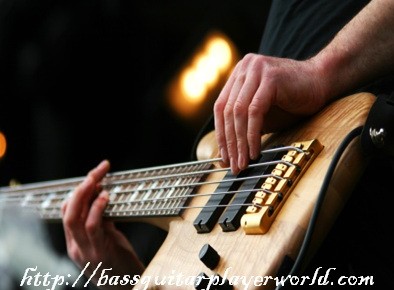Play Slow Blues Bass Groove With Feel
 Playing the blues is all about learning to play with feeling. The slow blues is one of the most emotional experiences a player could have.
Playing the blues is all about learning to play with feeling. The slow blues is one of the most emotional experiences a player could have.
Not only are you able to put all of your feeling into every aspect of every note up to the very timing, but it gives your listener more to feel the note as well.
In this article, we will discuss the basics of slow blues bass grooves so that you can learn how to create your own creative grooves.
Timing First. Always!
The first step is all about timing. Although in most cases you will be using quarter notes and half notes, you need each of those notes to be timed perfectly. No matter how slow a piece is, rhythmic timing is the most important aspect. In fact, some musicians find it harder to keep time when playing slowly as they simply lose track of the tempo and where they are within the song.
To make sure that this doesn’t happen to you, take your time and use a metronome. Build up your time keeping abilities bit by bit. You won’t need to start at a slow tempo because you should already be playing at around 60bpm to 80bpm.
The only thing that you should worry about is whether or not your timing is correct. Your quarter notes should fall on the click and be held until the next click. Your half notes should last two full clicks. Likewise, your whole notes should last a total of four clicks.
 Playing slow isn’t an excuse to play sloppily; pay attention to your fingering. Make sure that each of your chords is fingered properly. Many slower blues grooves involve sliding using chords embellishments.
Playing slow isn’t an excuse to play sloppily; pay attention to your fingering. Make sure that each of your chords is fingered properly. Many slower blues grooves involve sliding using chords embellishments.
This means that, in between chords, you will have to change your pressure. If you are performing a normal chord embellishment, it will mean that you will have to apply more pressure to the higher strings.
What You Can Do to Spice Things Up a Little
When you play a slower blues bass groove, the best way to get more out of each note is to think like a guitarist. Try using triads, whether inverted or in root position, and try adding notes to them. Try different intervals. Use chromatic leading tones to get to your next chord. There is a ton of ways to bring you from one chord to the next.
Embellishments don’t have to be your only choice. If you do choose an embellishment, remember that you will only have up to four notes working at once. This means that your embellishment will need to be two notes. This also means that your embellishment will no longer technically be a chord.
The only way to see what works best is to practice writing slow blues bass grooves. Set aside a block of time each day in which to work with new ideas. Allow yourself to be creative, but within a reasonable bounds.
This means don’t add a flurry of sixteenth notes instead of a leading tone. It may sound like a far out idea, and that is because it is far from pleasing. Have fun, and take your time to get the best results.
Become a Master Bassist In No Time
Jamplay offers tons of in-depth lessons on various genres of music. Every single lessons is professionally recorded, tabbed and comes with extensive documentation.
Related Articles
Comments are closed.






